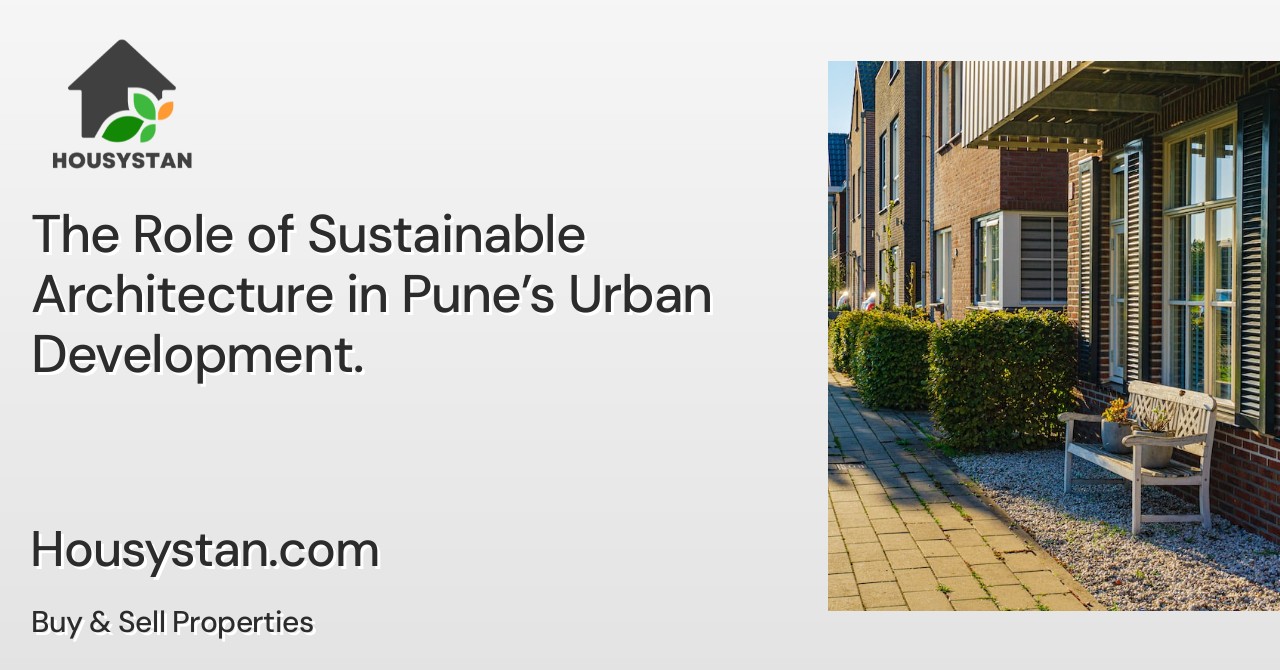The Role of Sustainable Architecture in Pune’s Urban Development
Read latest blogs and articles from Housystan

The Information mentioned here was last updated on:
28/12/2025The Role of Sustainable Architecture in Pune’s Urban Development
Pune, a vibrant metropolis in Maharashtra, is rapidly emerging as a hub for technological innovation and urban expansion. As the city’s skyline evolves, the significance of sustainable architecture in Pune’s urban development becomes increasingly vital. By integrating eco-friendly design principles, Pune is not only addressing environmental concerns but also shaping a healthier, more resilient urban environment for its residents.
Sustainable architecture in Pune focuses on minimizing environmental impact through energy-efficient buildings, responsible use of materials, and innovative waste management strategies. Developers and architects are adopting green building certifications, such as IGBC and LEED, to ensure that new constructions adhere to global sustainability benchmarks. These initiatives reduce carbon footprints, promote renewable energy usage, and enhance indoor air quality—factors that are critical for a growing urban population.
- Verified Tenants/Buyers
- Unlimited Property Listing
- Zero subscription/charges fee
Local climate plays a crucial role in shaping Pune’s sustainable architecture. With its moderate temperature and monsoon-driven rainfall patterns, architects design structures that maximize natural ventilation, daylight utilization, and rainwater harvesting. Green roofs, solar panels, and vertical gardens are now common features in commercial and residential projects across Kalyani Nagar, Baner, Hinjewadi, and other prominent neighborhoods.
The government of Maharashtra and Pune Municipal Corporation are actively supporting sustainable urban development through policy incentives and urban planning guidelines. Initiatives like the Smart City Mission and eco-friendly zoning regulations promote walkable neighborhoods, public transportation, and green public spaces, further contributing to Pune’s sustainability goals.
Adopting sustainable architecture in Pune not only reduces energy consumption and operational costs but also enhances property value and community well-being. Forward-thinking developers in Pune are collaborating with local artisans to use indigenous materials, supporting both environmental conservation and the local economy. As more citizens and businesses prioritize sustainability, Pune stands as a leading example of how eco-conscious design can drive progressive urban growth in India.
In summary, the integration of sustainable architecture into Pune’s urban development is essential for building a future-ready, environmentally responsible city. By embracing innovative solutions and fostering a culture of sustainability, Pune is setting a benchmark for urban centers across India and beyond.